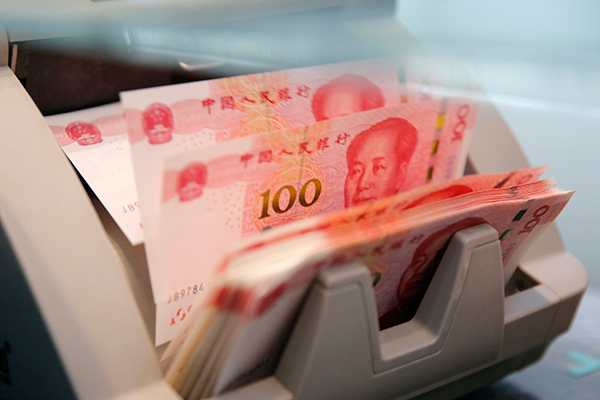Key lending rate kept unchanged in China
By CHEN JIA | CHINA DAILY | Updated: 2020-03-21 08:34

Experts: PBOC has enough policy tools to cut borrowing costs when required
The People's Bank of China, the central bank, left its key benchmark lending rate unchanged on Friday amid expectations that it would follow its global counterparts in lowering financing costs to boost economic activity.
The PBOC maintained the one-year loan prime rate (LPR) at 4.05 percent on Friday, the same as in February, and the five-year LPR, a key gauge of mortgage rates, at 4.75 percent. The LPR reflects the lending rate that 18 banks offer to their best clients. It did not make any changes to the medium-term lending facility (MLF) and maintained it at 3.15 percent. It had infused $14 billion into the financial system through this facility recently.
Analysts said though the central bank did not make the much-anticipated cut, it still has enough policy tools to use in the following weeks to lower the borrowing costs.
Ma Jun, a member of the PBOC Monetary Policy Committee, said on Friday that some commercial banks have lowered their lending rates after the PBOC shored up liquidity by $79 billion through reserve recruitment ratio (RRR) cuts earlier in the week. Other lenders may need more time to adjust the rates, he said.
The PBOC still has enough room to further cut the RRR, broadly or in a targeted manner, to maintain a certain growth rate in broad money supply and stabilize the economy, said Ma. "The central bank can also strengthen its open market operations if required."
Leading central banks across the world undertook emergency rate cuts in the past few days to counter capital market turbulence. The US Federal Reserve slashed its policy rate to nearly to zero on Sunday. The Bank of England cut its policy rates by 50 basis points.
"Monetary easing in other nations has been mostly to contain the shocks caused by the novel coronavirus outbreak, just like what the PBOC did at an earlier stage. Since China has made considerable advances in controlling the epidemic, there is no need for the PBOC to take any immediate action," said Sheng Songcheng, deputy head of the Shanghai-based CEIBS Lujiazui Institute of International Finance and a former official of the central bank.
China's policies have largely focused on controlling the epidemic, promoting economic growth and easing financial difficulties of small and medium-sized enterprises, said Sheng. "The US Fed has said its aim was to facilitate credit and prevent short-term disruptions from turning into long-term recession."
Some economists had expected the PBOC to cut interest rates, including the deposit rate, in the first half of April, to support production resumption and encourage banks to issue cheaper loans. To deliver on the promise of lowering financing costs, the PBOC may have to rely on more effective ways to lower rates, said a research note from Japanese brokerage Nomura Securities.
"The PBOC is likely to make a 25 basis point cut to both the one-year benchmark deposit rate and the one-year MLF rate in the coming weeks," said Lu Ting, chief economist for China at Nomura.
"In addition to rate cuts, we also expect more financial relief and monetary or credit easing measures in the coming months, including further liquidity injections through channels such as the MLF, targeted MLF and RRR cuts, using lending facilities such as pledged supplementary lending (PSL) to fund loan extensions, and reductions in interest payments," he said.
"However, due to the unique nature of this virus-led shock and the constraints on Beijing's policy space, we believe that Beijing will likely forego a massive stimulus package on a par with those implemented during the 2008-09 and 2014-16 easing cycles," said Lu.
Ben Luk, a senior multi-asset strategist at State Street Global Markets, a US-based brokerage, said there was no certainty that the PBOC would not lower the rates.
"While we cannot rule out that the PBOC could push benchmark rate lower after leaving it practically unchanged since 2015, the impact of such a move on the real economy is rather limited," he said.
"The benchmark rate is already near its lowest level in the last few decades as the PBOC has aggressively reduced rates during the 2015 market rout. In addition, most of the new loans have moved away from the benchmark rate and are instead pegged to the MLF," he said. "Therefore, it is more prudent for the PBOC to lower the MLF and subsequently the LPR to provide funding to consumers and banks with less capital buffer."
























